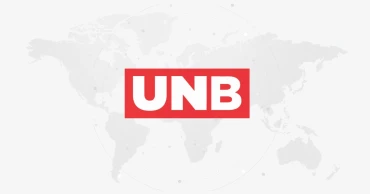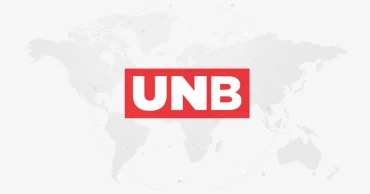capital expenditure
Finance Ministry stresses the importance of balancing recurrent and capital expenditure
The Finance Ministry has highlighted the crucial need for a balanced approach to budgetary allocations between recurrent and capital expenditure, recognizing their collective impact on the country's growth prospects and social welfare. This perspective is outlined in the ministry's document, the 'Medium Term Macroeconomic Policy Statement (2023-24 to 2025-26)', which underscores the different priorities of developed and developing nations in terms of government spending.
Developed countries often prioritize transfers and subsidies, whereas developing economies are more inclined towards investing in social and community services. Despite the positive outcomes from income transfers in enhancing citizens' lives, there is a pressing need to ramp up capital expenditure to cater to the increasing public investment demands and foster the creation of productive assets.
Budgetary classifications broadly categorize government spending into recurrent and capital expenditures. Recurrent expenditure encompasses wages, goods and services purchases, subsidies, transfer payments, and interest on loans. In contrast, capital expenditure is directed towards building and enhancing productive assets, including developments under the Annual Development Program (ADP) and non-ADP initiatives.
Sikder Group responds to allegations following ACC case against directors
The trend in capital expenditure, representing a portion of the total expenditure, has seen an upward trajectory, albeit with fluctuations, while recurrent expenditure has shown a gradual decrease. The revised budget for the fiscal year 2022-23 allocated 59.1 percent to recurrent expenditures, with projections indicating a slight reduction over the next three years. Meanwhile, capital expenditure is set to rise from 40.9 percent in the 2022-23 fiscal year to 41.3 percent by 2026, reflecting an ongoing commitment to bolstering public investment.
The increase in recurrent expenditure from 56.7 percent in FY 2017-18 to 59.4 percent in FY 2021-22 was influenced by various stimulus packages introduced to support vulnerable groups during the combined challenges of the COVID pandemic and the Russia-Ukraine conflict. Conversely, capital expenditure through the ADP, a critical component of the budget, has experienced modest growth from 4.5 percent of GDP in FY18 to an estimated 5.1 percent of GDP in FY 2022-23.
This strategic focus on balancing recurrent and capital expenditures aligns with the government's objectives to drive sustainable economic growth while ensuring the welfare of its citizens through prudent fiscal management.
Eid holiday: Trade activities through Benapole port to be suspended for 5 days
1 year ago
Tk6 trillion budget in the works for 2021-22; govt eyes increased outlay on capital expenditure
The government allocation for public expenditure on goods and services will witness a significant rise in the coming years after a slight dip in the last couple of years.
The government has estimated to spend Tk 401.3 billion, which is 6.6% of the budget, for public expenditure in the coming 2021-22 fiscal.
The country is likely to get Tk 5933.14 billion budget for 2021-22 fiscal, Tk 253.14 billion higher than the running one, aiming to face the COVID-19 pandemic challenge for recovering the economy.
Read BSMMU announces Tk 602.73cr budget for FY 2020-21
The estimation for 2022-23 fiscal has been set at Tk 465.2 billion, which will be 6.7% of the budget.
According to an official document, the allocation for the purpose in the running 2020-21 fiscal is Tk 350 billion or 6.1% of the budget.
The document also reads that the government has estimated to bring down its expenditure in current account, including purchase of product and service, while increase the capital expenditure in the next two fiscals.
It said that the current expenditure for 2021-22 and 2022-23 fiscal has been estimated at 54.4% and 54.5% of the total budget respectively.
Also read: Spending on public servants' remuneration to witness uptick from next fiscal
As per the document, the government allocation for expenditure can be divided in current expenditure and capital expenditure.
Salaries and allowances of government employees, purchase of product and service, compensation and relocation expenses, payment of interest against foreign and domestic loans - these are all found under the current expenditure category. Besides, ‘food accounts’ and ‘expense for structural coordination’ are also under this expenditure.
On the other hand, capital expenditure is spending that leads to the creation of new productive assets and inclusion. It is akin to investment, so government-funded projects and project components in the annual development programme (ADP), as well as non-ADP capital expenditure are the two main categories for capital expenditure.
Also read: Stop unnecessary expenditure of public money: PM
Besides, loans and advance payments, development programmes from revenue budget, projects outside the ADP and non-ADP Food for Work programme and handover expenses fall under this expenditure.
The document stated that in the revised budget for the 2019-20 fiscal, the allocation for public expenditure on products and services was Tk 322.1 billion, that is 6.5% of the budget.
It also mentioned that in 2018-19 fiscal the allocation was Tk 285.7 billion which was 7.3% of the budget that year.
In four previous fiscals i.e. 2017-18, 2016-17, 2015-16 and 2014-15 respectively, the allocations were Tk 234.8 billion (7.3% of budget), Tk 205.49 billion (7.6%), Tk 182.05 billion (7.6%) and Tk 166.27 billion (8%).
Read 'Unimplementable' budget to cause public sufferings: BNP
The document said that from 2014-15 fiscal to 2018-19 fiscal the allocation for public expenditure in product and service was near about 8%.
Due to various government steps, like enhancement of transparency through introducing E-GP, development in public procurement management and others, the allocation for this sector can be delineated in the government budget process, the document said.
Meanwhile, amid the Coronavirus crisis, the government is working according to what it believes to be 'a comprehensive plan' with four main strategies.
The 4-pronged strategy entails discouraging luxury expenditures, prioritising government spending that creates jobs, creating loan facilities through commercial banks at subsidised interest rates for the affected industries and businesses, and finally expanding the coverage of the government’s social safety net programmes.
Read Govt aims to rein in budget deficit back within 5% from next fiscal
4 years ago



